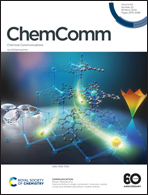Computational tools to study non-covalent interactions and confinement effects in chemical systems
Abstract
Confinement is a very common phenomenon in chemistry, for example, when molecules are located inside cavities. In these conditions, the electronic structure of atoms and molecules is modified. These changes could be mapped through the interaction with other molecules since non-covalent interactions between molecules are also influenced by confinement. In this work we address both topics, non-covalent interactions, and confined systems, using quantum chemistry tools with new software, emphasizing the importance of analyzing both fields simultaneously.



 Please wait while we load your content...
Please wait while we load your content...